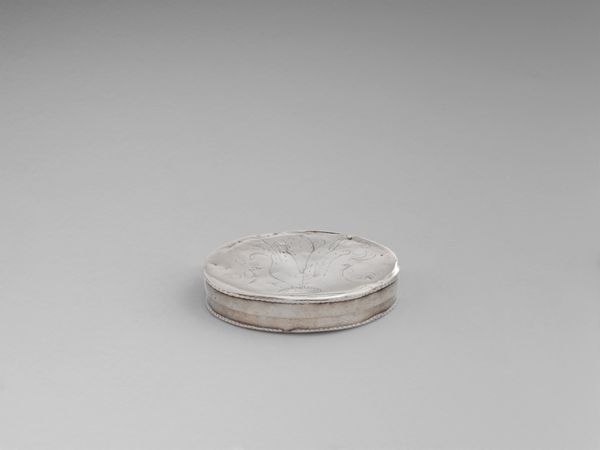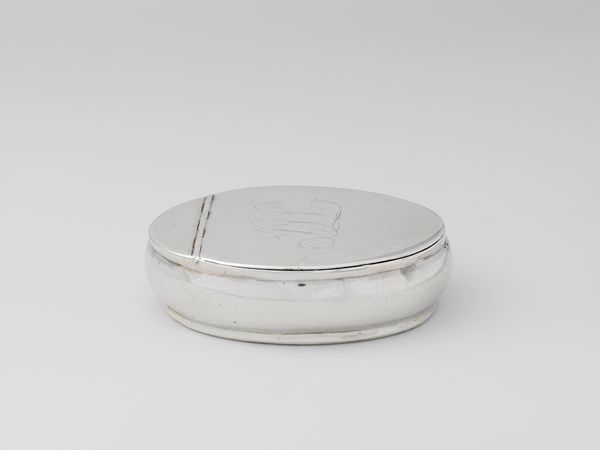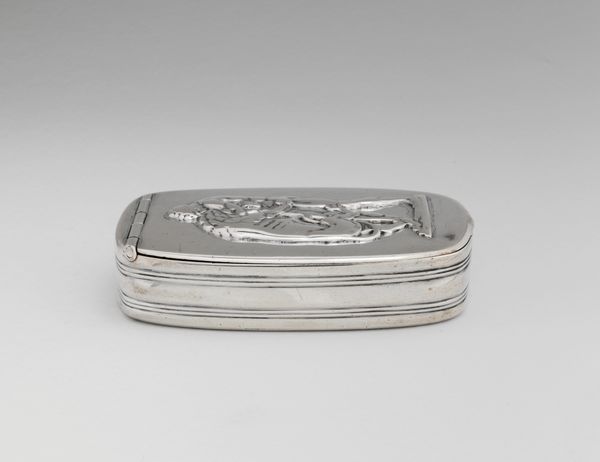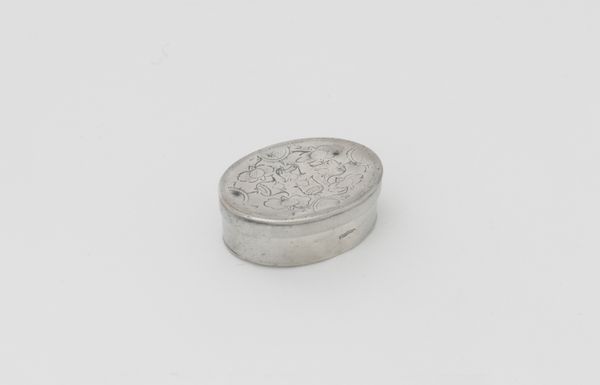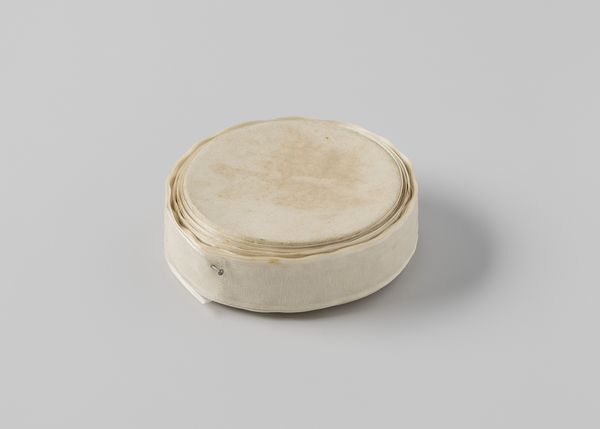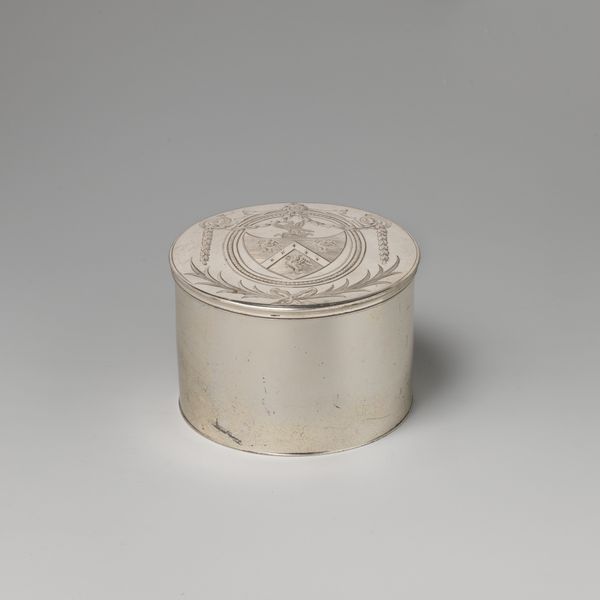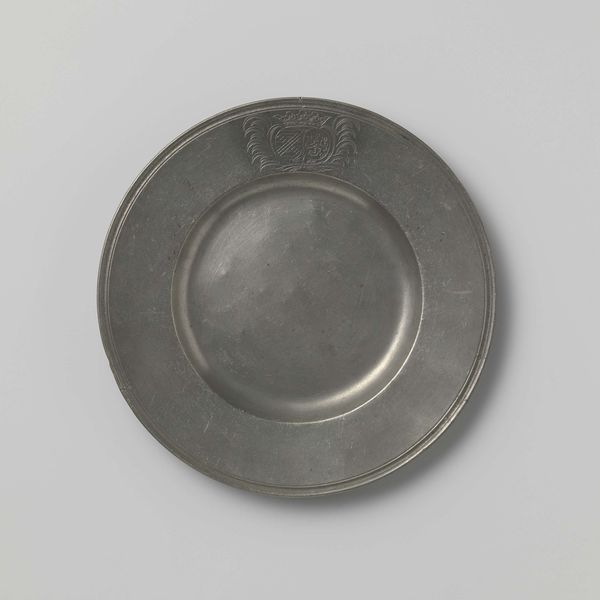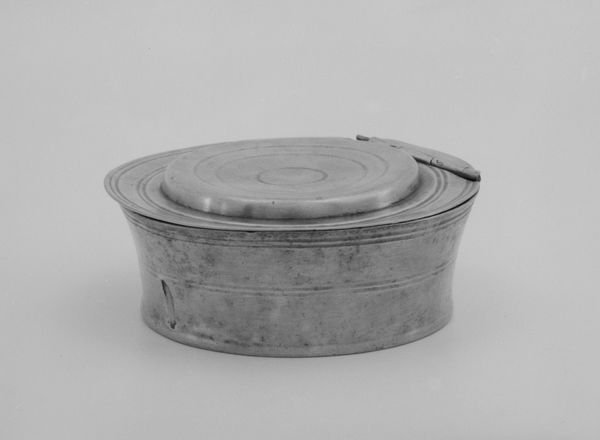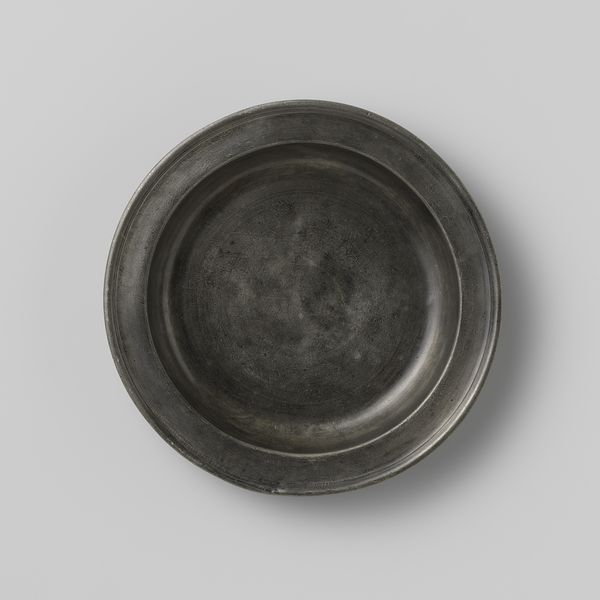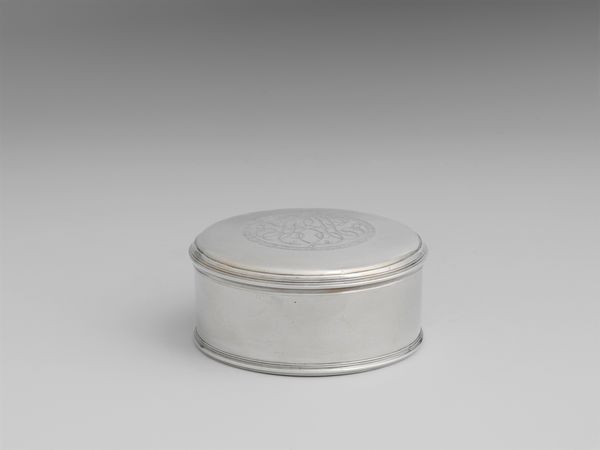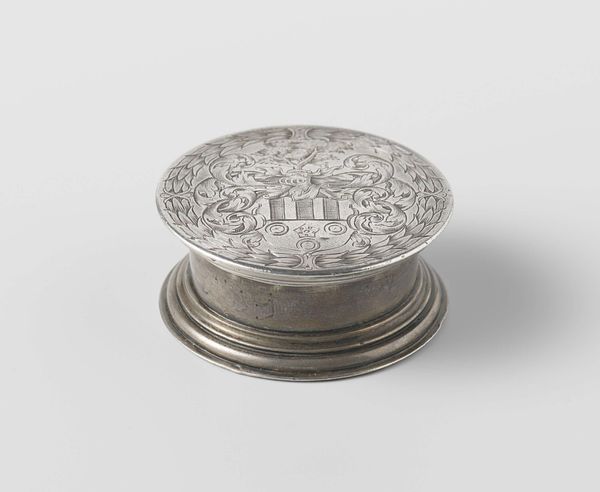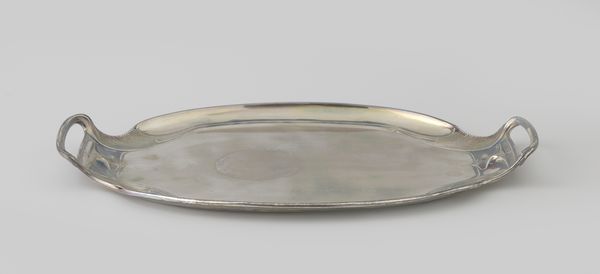
#
studio photography
#
product studio photography
#
3d printed part
#
product fashion photography
#
culinary art
#
product design photgrpaphy
#
stoneware
#
wash background
#
ceramic
#
united-states
#
product photography
Dimensions: Overall: 1/2 x 2 3/4 x 3/4 in. (1.3 x 7 x 1.9 cm); 1 oz. 7 dwt. (41.9 g) Body: 15 dwt. (23 g) Cover: 12 dwt. (18.9 g)
Copyright: Public Domain
This is a silver patch box, made by John Windover, an American silversmith active in the early 18th century. Small and unassuming, it speaks volumes about the social rituals of its time. Patch boxes held small pieces of fabric, known as patches, which were used to cover blemishes or scars on the face. In the 1700s, these patches were more than just cosmetic aids. They were carefully positioned as beauty marks, to draw attention to certain features, or to convey a certain mood. The aristocracy in Europe and Colonial America drove the trend. A box like this would have been a precious possession, reflecting its owner's status and attention to detail. Silversmiths like Windover played a vital role in Colonial society, crafting objects that reflected European tastes but were made with American hands and resources. To understand its full meaning, we need to delve into period etiquette manuals, fashion plates, and even personal letters. These sources can reveal the subtle language of beauty, status, and social performance embodied in this small, silver box.
Comments
No comments
Be the first to comment and join the conversation on the ultimate creative platform.

